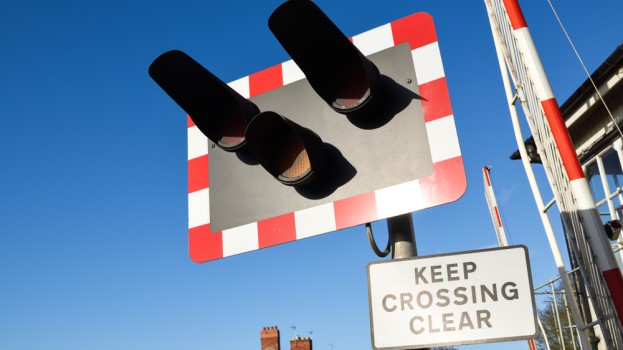As one of the main interfaces between the operational railway and the public space, level crossings are an area of risk for staff, other railway users and the wider public.
Here are some of the level crossing concerns that have been raised with us.

If you work on the frontline of the railway, in operations, maintenance, or customer service, you will often be one of the first people to notice safety issues or situations that could become unsafe. This includes level crossings, which pedestrians and drivers sometimes misuse, risking their own lives and others’.
You might notice rising or high levels of misuse and feel compelled to share your suggestions, or just want to make the right people aware. If you prefer to raise your concerns in confidence, with your identity protected, CIRAS offers an alternative to other reporting channels.
We will listen to your health, safety and wellbeing concerns – whatever they are about and wherever you work in transport – and pass them to the relevant company so they can act. Your concern can either be directed to your own employer or sent to another company.
We follow up to get a response, so we can share this with you. You will then have the chance to ask more questions through us – always without the company knowing your identity.
Crossing concerns
People have raised different concerns with us about level crossings. As with all railway assets, crossings can face wear and tear over time, or stop working properly, leading to safety issues. It is always worth bringing attention to these, whether through reporting channels that can provide an immediate response, or by using CIRAS if an issue does not pose an immediate risk.
Just a few of the types of concerns raised with us include lights at a level crossing dazzling train drivers, staff not being able to see the crossing clearly to identify unsafe behaviour, and queries about the suitability of a level crossing for its location.
In one example, a reporter to CIRAS highlighted a stop button for level crossing barriers that was not always responding immediately, and which was at times failing to prevent the barriers from being lowered. The reporter was concerned that the button could fail and someone become trapped. In its response, the company shared that a secondary safety system was in place to protect passengers and the public – with the signaller having to confirm the crossing is clear before allowing a train through. The response then explained the investigation and actions that followed, including replacing the controlling relay as a precaution, as this was operating intermittently, and confirmed that the telecom system at the crossing was planned for renewal.
Another time, a reporter raised that the image quality on CCTV cameras overlooking a level crossing was only acceptable on a dry, cloudy day, but not in other conditions such as at night, in rain or sun. This made it difficult for staff to confirm if the crossing was clear and safe for trains. After the CIRAS report, the CCTV cameras were adjusted to provide better visibility.
Elsewhere, a concern resulted in labels being replaced at gated small user-worked crossings. The reporter had been concerned that ‘line closed’ times on the labels could mislead the public, who might assume it wasn’t necessary to use the crossing telephone and cross without permission. The new labels removed this worry.
Whether you have a health and safety concern about a level crossing, another railway asset, or something else, we are here to listen.
Find out more
Case study: level crossing safety risks
Case study: passenger behaviour at station crossing
Tags
- Equipment
- Rules and Procedure
- Unsafe Practices
- Infrastructure Issue
- Infrastructure Managers
